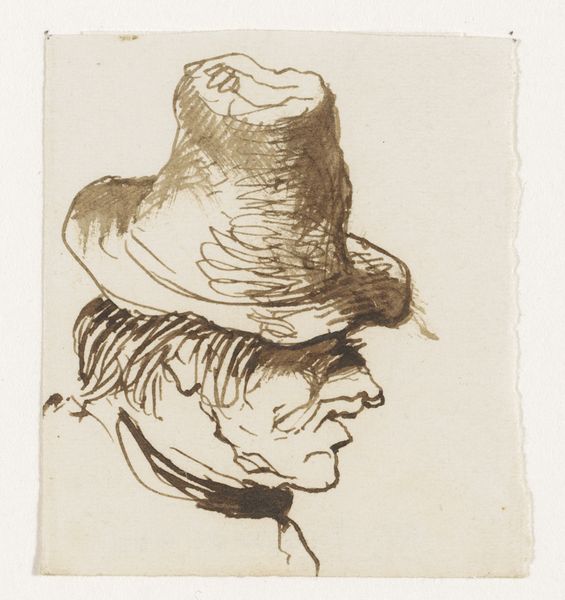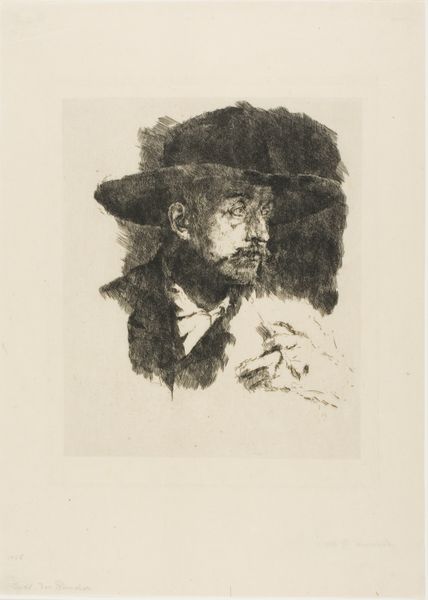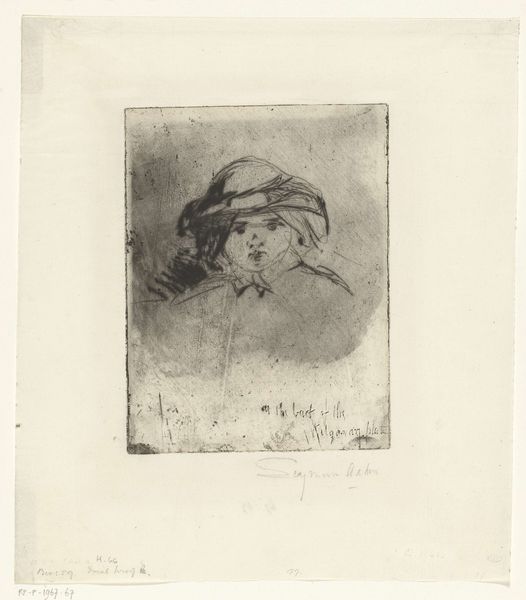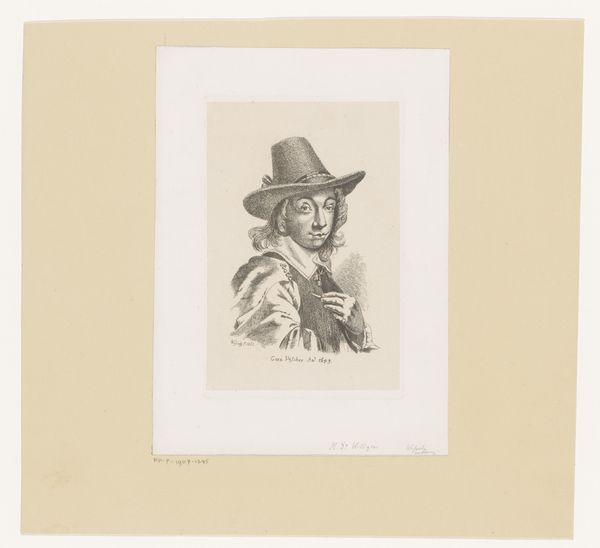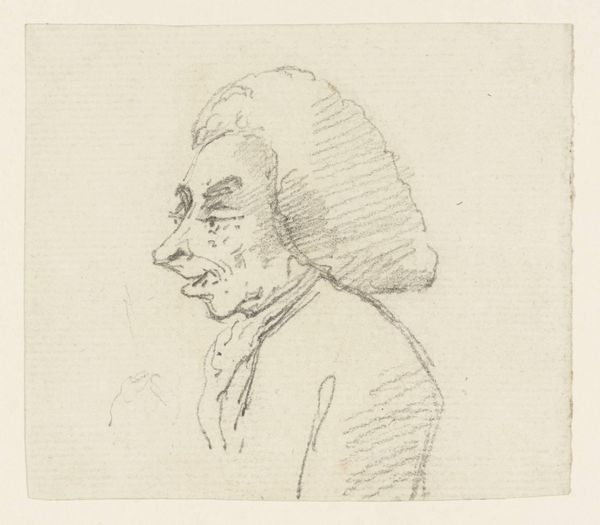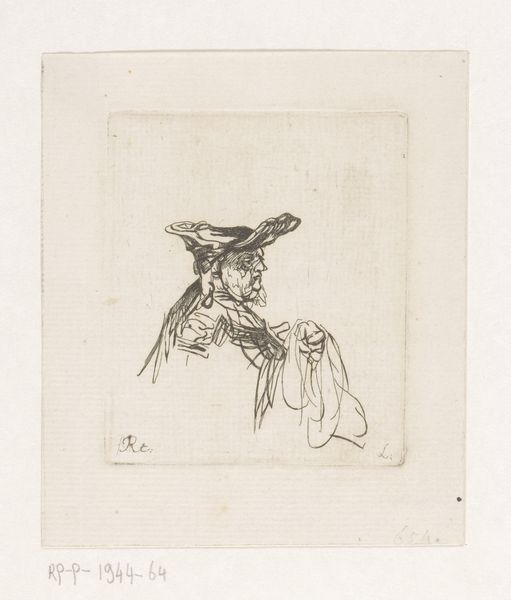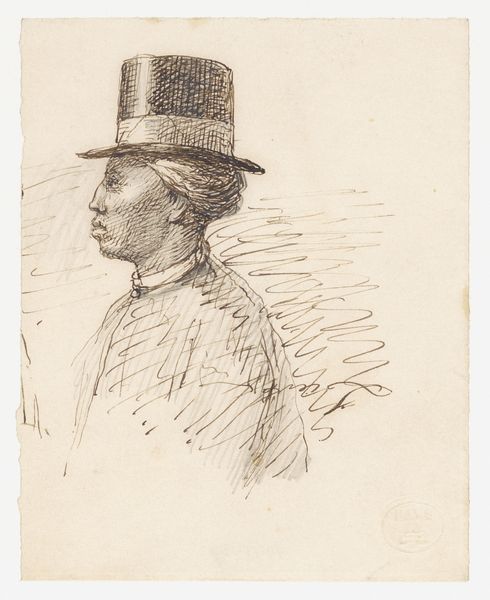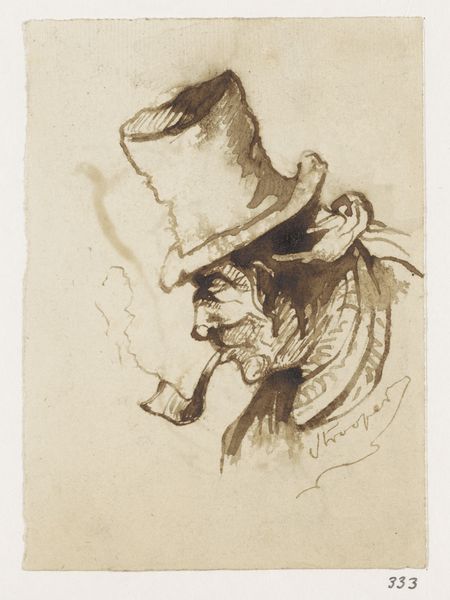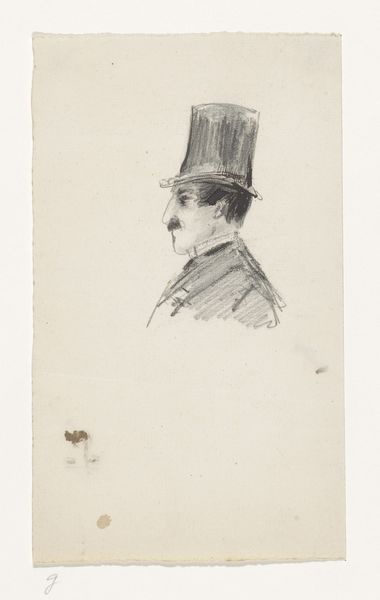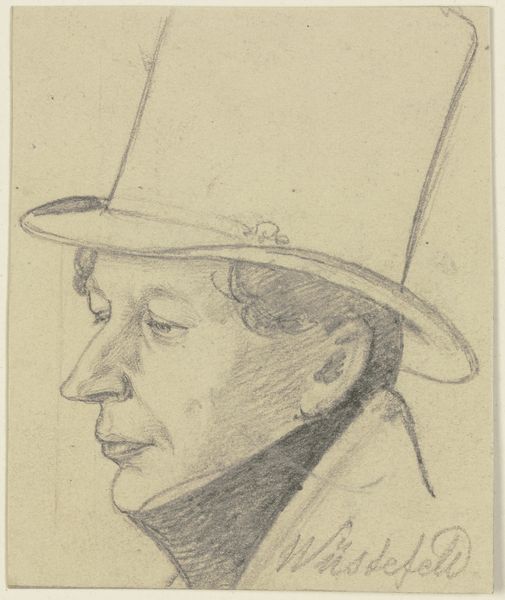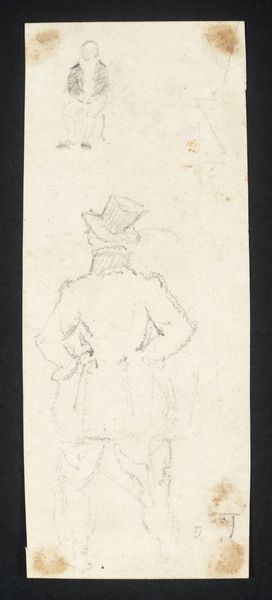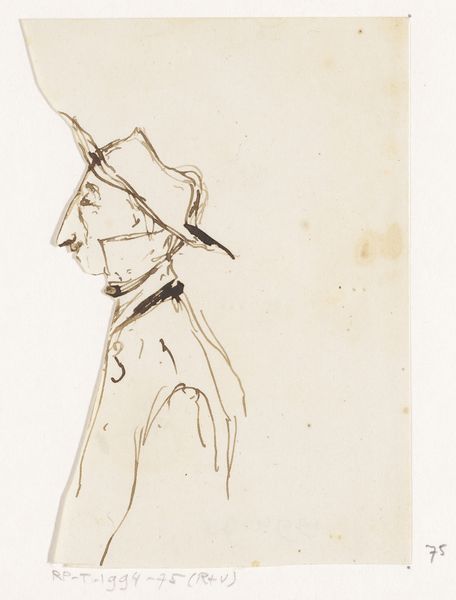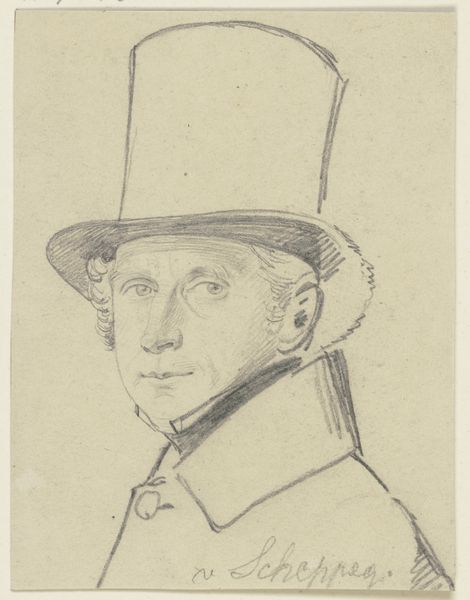
Dimensions: height 135 mm, width 188 mm
Copyright: Rijks Museum: Open Domain
Editor: Here we have Adolphe Alexandre Dillens' "Man met hoed," a pencil drawing done sometime between 1831 and 1877. There's something understated about this sketch, a quietness in the man’s profile. What do you see in this piece that I might be missing? Curator: Well, this portrait offers an interesting glimpse into the social constructions of masculinity and class during the 19th century. Consider the hat. It signifies a certain societal standing. It's not just a hat; it’s a symbol of bourgeois identity. And what does it mean to depict this individual, rather than someone else? Whose stories get told, and why? Editor: I hadn’t thought of the hat as being such a potent symbol. I was more focused on the artistic technique. Curator: Technique, absolutely, is important. But let’s think about *who* typically got their portraits drawn during this period. It wasn't the working class. Dillens chose to immortalize *this* man. How do we understand that choice in terms of power and representation? Editor: So, beyond just being a portrait, it’s almost a statement about who holds value in society? Curator: Exactly! And that’s where art history meets contemporary theory. We can use the drawing as a starting point to discuss broader issues of social inequality and representation that remain relevant today. Does seeing it this way change your perception of the "quietness" you mentioned initially? Editor: Definitely. It adds layers of meaning I hadn’t considered. Thanks! Curator: My pleasure. Thinking about art this way keeps it alive.
Comments
No comments
Be the first to comment and join the conversation on the ultimate creative platform.
